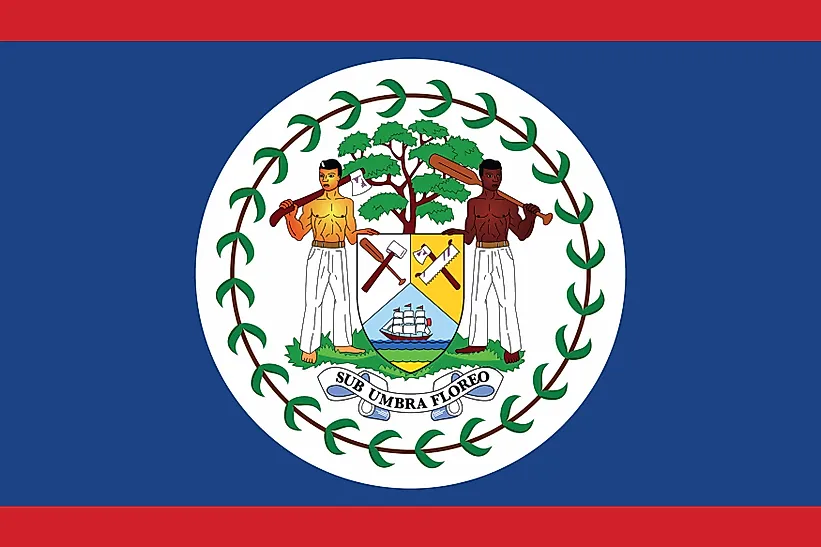
Belize
| Continent | Americas |
| Capital | Belmopan |
| Population | 353,858 |
| GDP | $3.09 Billion |
| GDP per Capita | $8,200 |
| Dialing Code | +501 |
| ISO Code (2-letter) | BZ |
| ISO Code (3-letter) | BLZ |
Belize Landscapes






About Belize
Welcome to Belize, a unique nation where Caribbean culture meets ancient Maya civilization in the heart of Central America. This English-speaking country of approximately 400,000 people occupies 22,970 square kilometers of diverse terrain, from tropical forests to the world’s second-largest barrier reef. As the only Central American nation with English as its official language, Belize offers visitors a distinctive blend of natural wonders, cultural diversity, and historical richness.
Geographic Features and Natural Beauty
Belize’s geography is remarkably diverse for its size, encompassing coastal plains, dense tropical forests, and the Maya Mountains in the south. The country’s Caribbean coastline stretches for 386 kilometers, featuring pristine beaches, hundreds of cayes (small islands), and the largest barrier reef system in the Western Hemisphere.
The Great Blue Hole, a massive underwater sinkhole measuring 300 meters across and 124 meters deep, is one of the world’s most remarkable natural phenomena and a premier diving destination. The country’s interior features extensive cave systems, including the Chiquibul Cave System, one of the largest in Central America.
More than 60% of Belize remains covered in forest, providing habitat for diverse wildlife including jaguars, tapirs, and hundreds of bird species. The Mountain Pine Ridge Forest Reserve offers a unique ecosystem of pine forests at higher elevations, contrasting with the tropical broadleaf forests found elsewhere.
Cultural Heritage and Traditions
Belizean culture is a vibrant mosaic of influences from Maya, Creole, Garifuna, Mestizo, and other ethnic groups. This diversity is reflected in the country’s music, dance, cuisine, and festivals. The Garifuna culture, in particular, has been recognized by UNESCO as Intangible Cultural Heritage of Humanity.
Traditional music includes brukdown (Creole), punta (Garifuna), and marimba (Maya), each reflecting the unique heritage of different communities. Belizean cuisine combines Caribbean, Mexican, and Maya influences, featuring dishes like rice and beans, stewed chicken, and seafood preparations.
The country’s craft traditions include wood carving, basket weaving, and the creation of traditional Maya textiles. Local festivals, such as the San Pedro Lobsterfest and the Garifuna Settlement Day, celebrate the nation’s cultural diversity and maritime heritage.
Historical Journey
Belize’s history spans from ancient Maya civilization through British colonial rule to independence. The region was once the heart of the Maya civilization, with cities like Xunantunich and Caracol serving as major centers of power and culture. Archaeological evidence suggests that over 2 million Maya once lived in what is now Belize.
British settlers, known as Baymen, established a presence in the 17th century, leading to the territory becoming British Honduras in 1862. The country achieved independence in 1981, maintaining strong ties with Britain while developing its own unique national identity.
Modern Economic Landscape
Today’s Belize has an economy primarily based on tourism, agriculture, and services. The tourism sector has grown significantly, driven by the country’s natural attractions, excellent diving and snorkeling opportunities, and well-preserved Maya ruins.
Agriculture remains important, with exports including sugar, bananas, citrus fruits, and marine products. The country has also developed a growing offshore financial services sector, taking advantage of its English-speaking workforce and British-based legal system.
International Relations and Global Position
Belize maintains active participation in Caribbean and Central American regional organizations while fostering strong ties with both Britain and the United States. The country is a member of CARICOM (Caribbean Community) and various international organizations, playing an important role in regional environmental conservation efforts.
Did You Know?
• Belize is home to the only jaguar preserve in the world, the Cockscomb Basin Wildlife Sanctuary?
• The country has the lowest population density in Central America?
• Ancient Maya ruins can be found in Belize that are yet to be excavated, still covered by jungle growth?
• The Great Blue Hole was explored by Jacques Cousteau in 1971, who declared it one of the top ten diving sites in the world?
Conclusion
Belize represents a unique convergence of Caribbean and Central American cultures, where ancient Maya heritage meets modern eco-tourism. From its coral reefs to its rainforests, from its ancient ruins to its vibrant modern culture, Belize offers visitors and residents alike an extraordinary blend of experiences. As it faces the challenges of development and environmental preservation, Belize remains committed to sustainable growth while protecting its natural and cultural heritage.